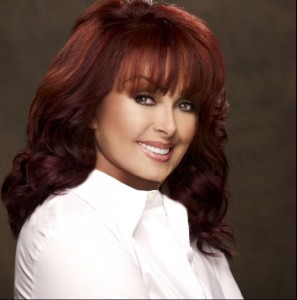Visitors to The Caregiver’s Voice website had the opportunity to ask Country Music Singer Naomi Judd questions about pain management. What caregiver doesn’t suffer some level of pain? Naomi Judd’s stellar music career was cut short in 1991 after she was diagnosed with Hepatitis C–a potentially fatal liver disease–from an infected needle while working as a registered nurse. Naomi has since returned to music and she also serves as a spokesperson for Partners Against Pain.
 1. Caregivers suffer chronic pain due to the mental and physical stresses of caregiving — whether it be lower back pain, headaches, or ?? What advice would you give to caregivers whose choices are limited and feel overwhelmed at having to do it all?
1. Caregivers suffer chronic pain due to the mental and physical stresses of caregiving — whether it be lower back pain, headaches, or ?? What advice would you give to caregivers whose choices are limited and feel overwhelmed at having to do it all?
To be the most effective caregiver you can be for your loved one, you must first be sure to take care of yourself. If you’re experiencing chronic pain, it is important to see a healthcare professional who understands pain management and get a proper diagnosis.
There are also many resources available to caregivers, such as visiting nurses and volunteer groups. Talk with your healthcare professional to find out about what is available in your local area. You can also download the free educational Caregiver Cornerstones booklet at Partners Against Pain. [Link unavailable]
2. Current medical studies point to no cure for the steady march of osteoarthritis, which strikes many menopausal women who are also caregivers. Are there alternative therapies that can reverse / halt osteoarthritis?
With osteoarthritis and any type of condition that involves chronic pain, I’m a strong advocate for integrative care, which means combining traditional medicine with complementary and alternative therapies.
Traditional medicine generally refers to prescription or over-the-counter medications, which are an important part of managing chronic pain that should not be overlooked.
In addition to traditional medicine, alternative therapies that are frequently helpful in treating chronic pain may include yoga, acupuncture, massage, physical therapy, biofeedback, tai chi and meditation.
People with osteoarthritis pain should talk to their healthcare professional about how much the pain may be interfering with their activities and come up with a treatment plan to address their individual needs.
It is also important to tell your provider about any and all treatments you are trying or interested in, including an integrative approach.
3. Loved ones with moderate to late-stage dementia may not be able to express their pain in a meaningful way. This has led some to wonder if the death of brain cells in those living with Alzheimer’s may also dull their pain. There are many of us who don’t believe this. How can we better prepare family and professional caregivers to assess then address the pain experienced by loved ones?
This is a very serious and important issue, and it is critical to consider that individuals with dementia may be experiencing pain and may indeed have trouble communicating their pain to others.
The Partners Against Pain website provides tools for assessing pain in adults with dementia. [TCV: Direct link: Guidelines for assessing pain in adults with dementia. – Link unavailable]
4. Do you feel that healthcare professionals are too quick to administer pain medications without checking other options, first?
Prescription and over-the-counter medicines play an important role for many people coping with chronic pain. The bottom line is that effective pain management can include many different approaches that involve pain medicine with complementary therapies such as yoga and massage.
There is no one-size-fits-all solution.
Educate yourself and work with your healthcare professional to develop a plan that is tailored to your individual needs. And remember, you may have to try several different approaches, or a combination of therapies, before you find the one that works best for you.
5. How do you summon the strength to get through each day?
I have been extremely blessed. I’ve got a terrific life and I’m so grateful for my family and friends. I also feel fortunate to have a career that has allowed me to speak up for others who might not have a voice, including those living with chronic pain. Today there are an estimated 53 million Americans living with chronic pain. I’m thankful that I can get the word out about this serious health condition.
I want people to know that they are not alone. There is help available and there is hope. If you or a loved one is experiencing pain, educate yourself and speak with a healthcare professional who understands pain and can discuss the different treatment options available.
TCV: Thank you, Naomi Judd, for taking time to answer five of the questions asked by visitors to The Caregiver’s Voice.
Click here for: Naomi Judd’s wiki page.









I really liked your post !! thank you for taking out some time to write it up and sharing with us !!!!
Automobile accident. There will be back pains as the body is affected by the damages in tissue, muscles, ligaments and tendons caused by the impact.Bulging or ruptured disks. When the disk swells out of location, it rends and presses on a nerve so there’s back ache. But some folks do not feel any pain at all.